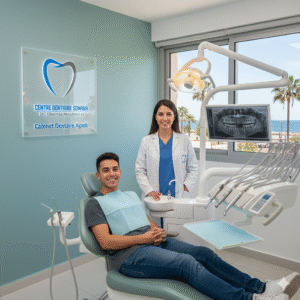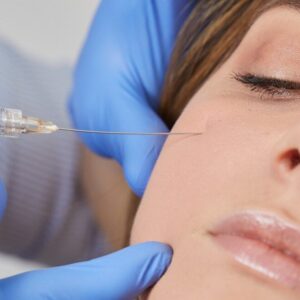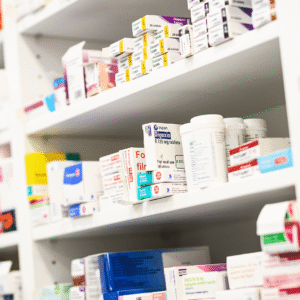Introduction
Understanding Peripheral Artery Disease
PAD occurs when plaque builds up in the arteries that supply blood to the legs and feet. This leads to reduced circulation, which can cause symptoms such as leg pain during walking (claudication), numbness, or slow-healing wounds. Left untreated, PAD increases the risk of critical limb ischemia or cardiovascular events. Modern management focuses on both symptom relief and prevention of disease progression.
What is PAD?
PAD occurs when plaque builds up in the arteries supplying blood to the legs and feet. This buildup restricts circulation, leading to symptoms such as leg pain during walking (claudication), numbness, or slow-healing wounds.
Risk Factors for PAD
PAD is influenced by multiple factors, including high blood pressure, diabetes, smoking, high cholesterol, obesity, and age. Understanding and managing these factors is critical to reducing disease progression.
Potential Complications
If left untreated, PAD may lead to critical limb ischemia, chronic wounds, infections, and an increased risk of heart attacks or strokes.

Diagnostic Innovations
Early and accurate diagnosis is critical for effective management. Abu Dhabi healthcare providers use advanced diagnostic tools to assess vascular health. Non-invasive tests such as Duplex ultrasound, ankle-brachial index (ABI) measurement, and CT or MR angiography are standard. These methods provide detailed imaging of blood vessels, allowing physicians to detect blockages, narrowing, or compromised blood flow before serious symptoms appear.
Minimally Invasive Treatments
Modern treatment strategies prioritize minimally invasive procedures whenever possible. Endovascular techniques, such as balloon angioplasty and stent placement, are commonly employed. These procedures widen narrowed arteries and restore blood flow with minimal disruption to surrounding tissue. Ablation therapy or drug-coated balloons may also be used to prevent restenosis, ensuring longer-lasting results. These approaches reduce recovery time and allow patients to resume daily activities more quickly compared to traditional open surgery.
Advanced Surgical Interventions
For severe or complex PAD cases, surgical interventions remain an important option. Bypass surgery may be performed to reroute blood flow around blocked arteries. In Abu Dhabi, hybrid operating rooms equipped with imaging technology allow surgeons to combine endovascular techniques with traditional surgery, enhancing precision and improving patient outcomes.
Lifestyle and Risk Factor Management
Alongside medical interventions, modern PAD care emphasizes management of risk factors. Smoking cessation, regular exercise, dietary adjustments, and monitoring of diabetes or hypertension play a crucial role in slowing disease progression. Multidisciplinary care teams support patients in adopting healthier lifestyles and maintaining long-term vascular health.
Patient-Centered and Multidisciplinary Approach
Comprehensive PAD care in Abu Dhabi integrates multiple specialties. Vascular specialists, cardiologists, interventional radiologists, physiotherapists, and wound-care professionals collaborate to create individualized treatment plans. This coordinated approach ensures that patients receive holistic care, addressing both the immediate condition and long-term prevention.
Monitoring and Follow-Up
Ongoing monitoring is an essential component of PAD management. Regular check-ups, imaging, and lifestyle guidance help detect recurrence or progression early. Patients are guided on maintaining limb health, preventing complications, and improving mobility and overall quality of life.
Why Abu Dhabi for PAD Care
-
Advanced technology: Access to high-resolution imaging, hybrid surgical theaters, and minimally invasive treatment tools.
-
Expertise: Highly trained vascular specialists and multidisciplinary teams experienced in modern PAD management.
-
Integrated care: Screening, intervention, rehabilitation, and follow-up all available in a coordinated healthcare system.
-
Focus on early detection: Preventive programs and regular monitoring help identify PAD before severe symptoms develop.
Common Symptoms Addressed
-
Leg pain or cramping during walking or exercise
-
Numbness or weakness in the legs
-
Slow-healing wounds or ulcers on feet or legs
-
Coldness in lower extremities
-
Skin discoloration or shiny skin on legs
FAQs — Frequently Asked Questions
What is Peripheral Artery Disease?
PAD is a condition where arteries supplying blood to the limbs become narrowed or blocked, reducing circulation and causing symptoms such as leg pain or numbness.
How is PAD diagnosed in Abu Dhabi?
PAD is diagnosed using non-invasive tests like Duplex ultrasound, ankle-brachial index measurements, CT or MR angiography, which provide detailed insights into blood flow and vessel health.
Are minimally invasive treatments available?
Yes. Endovascular procedures, including balloon angioplasty, stenting, and drug-coated balloon therapy, are widely used to restore circulation with minimal recovery time.
When is surgery required?
Surgical intervention, such as bypass surgery, is considered for severe or complex PAD cases where endovascular treatment alone is insufficient. Hybrid approaches combining surgery with minimally invasive techniques are also common.
What lifestyle measures help manage PAD?
Exercise programs, dietary changes, smoking cessation, and management of underlying conditions like diabetes or hypertension are essential components of PAD care.
Conclusion
Modern approaches to Peripheral Artery Disease in Abu Dhabi combine early detection, minimally invasive interventions, advanced surgical options, and lifestyle management. With a patient-centered and multidisciplinary approach, healthcare providers in Abu Dhabi are able to improve circulation, reduce symptoms, prevent complications, and enhance overall quality of life for individuals living with PAD.





